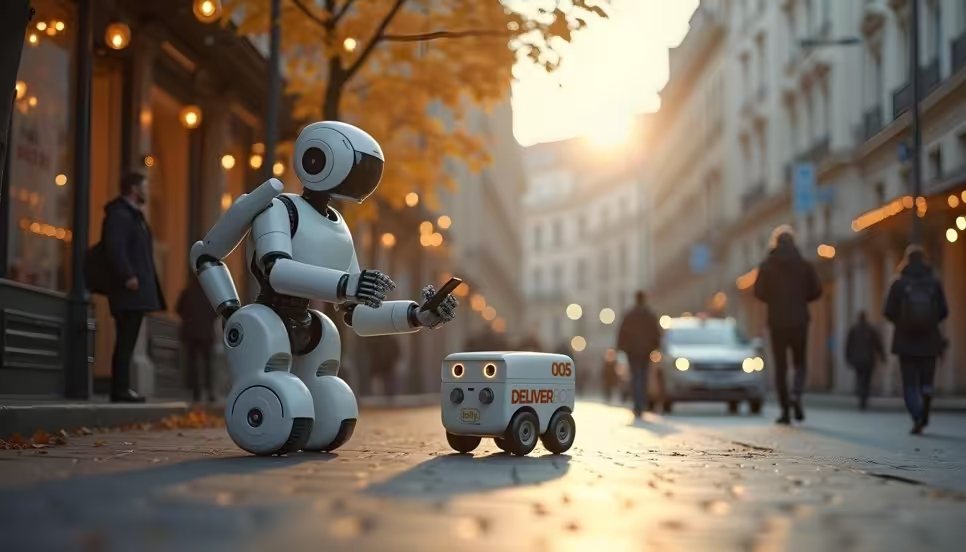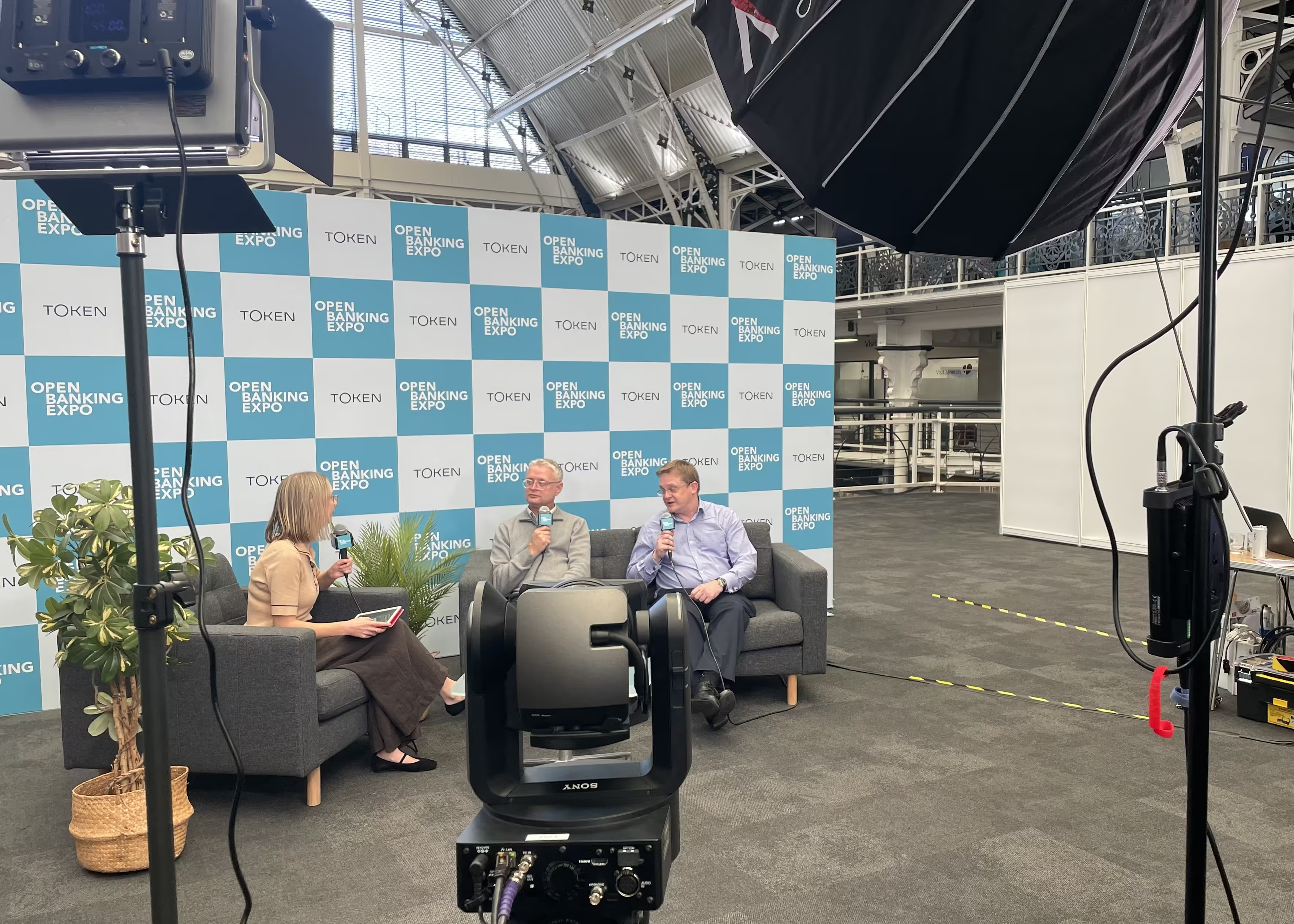Book a Demo
Please fill in the form, and we'll get back to you promptly with the information you need.
How Time is Changing Technology & Customer Experience

At the recent TUCO Northern Regional Meeting, Lolly’s CEO and Founder, Peter Moore, delivered a thought-provoking session- "How Time is Changing Technology & Customer Experience."
A technologist and futurist, Peter revealed what customers truly value, and how businesses can strip away friction to create experiences that feel intuitive, responsive, and effortless. He also unpacked the emerging trends already gaining momentum- technologies and behaviours that will soon shift from 'nice to have' to 'non-negotiable.'
Technological Acceleration
One of the defining forces reshaping customer experience today is the unprecedented acceleration of technology itself. For decades, Moore’s Law served as the benchmark for technological progress, predicting that computing power would double roughly every two years. But the rise of AI has accelerated this beyond predictions.
In hospitality, this acceleration translates into three major shifts:
Rapid innovation cycles: Technology updates, once occasional and disruptive, are now continuous. Solutions become outdated faster, and staying ahead requires adaptability.
Real-time data as standard: Operators can no longer depend on historical insights alone. Live data- what customers are choosing right now- is becoming essential for decision-making, forecasting, and personalisation.
Automation shaping operations: Automation is moving beyond convenience. It now plays a central role in efficiency, accuracy, and service consistency. From smart ordering to frictionless payments, technology is redesigning the operational backbone of hospitality.
Why Time Matters
Technology is accelerating, but customer patience is doing the opposite. Today, consumers feel they have less time than ever, and this pressure shapes every interaction they have. These modern consumers aren’t just looking for convenience; they expect it. The need for speed and simplicity has become a non-negotiable part of decision-making and, a result, speed often outweighs loyalty in hospitality and food service
This behaviour is even more pronounced among Generation Alpha, who are growing up immersed in digital environments. Waiting feels outdated, delays feel unacceptable, and brands that can’t meet their expectations risk losing them before the interaction even begins.
The Instant Gratification Era
We are living in an era defined by instant gratification- a world where customers expect immediate results and a world where customers expect immediate results and services delivered at the speed they demand.
At the centre of this shift is the demand for frictionless experiences. Whether ordering food, navigating a menu, or completing payment, today’s customer measures satisfaction by how quickly and seamlessly results happen.
The Tonies Study adds depth to this narrative. Children who regularly listened to Tonies- a screen-free, audio-based storytelling device- scored 32% higher in literacy compared to those who didn’t, and 53% showed improvement in attention. This reinforces that attention isn’t disappearing, but it is being reshaped.
Second-screen viewing
If you’ve ever watched TV with your phone in hand, you’re not alone. According to GWI, more than 80% of viewers worldwide multitask while watching content. Streaming platforms have adapted accordingly by simplifying plots and adding obvious cues so you can glance up and still follow the story.
This is the reality of second-screen viewing. Our attention is now routinely split between devices, apps, and conversations. Instead of fighting this fragmentation, the world around us has begun to redesign itself to maintain engagement, even when it only has a portion of our focus.
In hospitality, the same principle applies. Guests no longer give their undivided attention to any single touchpoint. They expect frictionless, low-effort interactions that fit around what they’re already doing- ordering food on an app while chatting with friends or navigating a self-service kiosk while scrolling through social media.
Success lies in designing experiences that remain smooth, intuitive, and human even when the customer’s attention is elsewhere.
Customer Experience Transformation
Customer expectations are shifting faster than ever, and hospitality is feeling the impact. What once defined great service- warmth and personal interaction- now competes with an equally powerful demand: speed.
Recent insights show that two-thirds of customers say speed is as important as price when choosing a brand. A slow process can outweigh a competitive price, and convenience increasingly shapes loyalty.
Expectations around personalised service are rising, with people wanting experiences that recognise their preferences and anticipate their needs, making them feel considered. Many prefer digital journeys that give them control- it’s not that human interaction has lost its value, customers now want it only when it adds value.
Changes In Hospitality
As customer expectations evolve, hospitality operators are navigating a landscape that is becoming increasingly complex. Labour shortages and rising costs continue to challenge businesses across the sector. With fewer hands available and the cost of running venues climbing, efficiency is no longer a competitive advantage, but a necessity.
Sustainability and compliance pressures are also intensifying, with rising numbers of customers caring about environmental responsibility, and regulators raising the bar on requirements.
This is where technology plays a transformative role. The goal is not to replace people, but to balance tech with the human touch. Automation can take on repetitive tasks, freeing up staff to focus on human interaction.
Solutions That Shape The Industry
Self-serve kiosks and mobile ordering have become essential tools for reducing queues, increasing order accuracy, and giving customers the immediacy they expect. They allow guests to move at their own pace while freeing staff to focus on high-value interactions.
Integrated payment systems play a similarly crucial role. When ordering, paying, and collecting are unified into one seamless flow, the transaction becomes simpler and more efficient- both for customers and for operators managing busy service environments.
Behind the scenes, data-driven decision-making empowers operators with real-time insight. From demand patterns to menu performance, data allows teams to make informed choices quickly, reducing waste, improving margins, and tailoring offerings to what customers actually want.
Together, these technologies form the backbone of a hospitality landscape built for speed, simplicity, and personalisation.
Future Outlook
Looking ahead, Peter emphasised a balanced perspective: it’s not all about AI, but a lot of it is. Artificial intelligence will continue to shape hospitality, but its value depends entirely on how responsibly and thoughtfully it’s applied.
One of the critical challenges he highlighted is the issue of AI hallucinations, where systems generate incorrect or fabricated information. In an industry where accuracy matters, this risk can’t be ignored. Operators must ensure that AI is built on reliable data foundations and implemented in ways that enhance, not compromise, the customer experience.
When building digital solutions for the dining environments of tomorrow, operators must keep these factors front and centre. Technology should accelerate operations, inform decisions, and support teams, but ultimately, it should serve people.
Frequently Asked Questions
At present the app is available in English, however, if you have a request for a specific language, contact us to enquire.
Yes, our kitchen management systems are physically robust and resilient, and their visual interfaces are designed to be seen clearly in low-light or high humidity environments.
Yes, the Mobile App can be customised with your branding including logos and colours, to provide a consistent experience for your customers.
Related Posts
See all posts
Royal Agricultural University (RAU) x Lolly – From Intuition to Insightful, Data-Driven Decisions
Lolly’s flexible, collaborative approach, combined with strong functionality and value, won unanimous support from Royal Agricultural University.

Lolly and Lloyds Launched Pay by Bank System at Open Banking Expo
Lolly, the UK-based hospitality specialist, has collaborated with Lloyds to develop an innovative Pay by Bank system, which was nominated for an award and showcased at the Open Banking Expo in London.

Unlocking Cost Savings and Sustainability via Kitchen Management Technology
With both consumers and regulators pushing for greener practices, many hospitality owners are finding it difficult to balance an eco-friendly environment while not just economically surviving, but economically thriving. Lolly’s Kitchen Management System (KMS) is the solution.
Subscribe to our Newsletter.
Subscribe to our newsletter to get a curated summary of our latest insights delivered to your inbox monthly. No sales pitches, no spam — ever.


